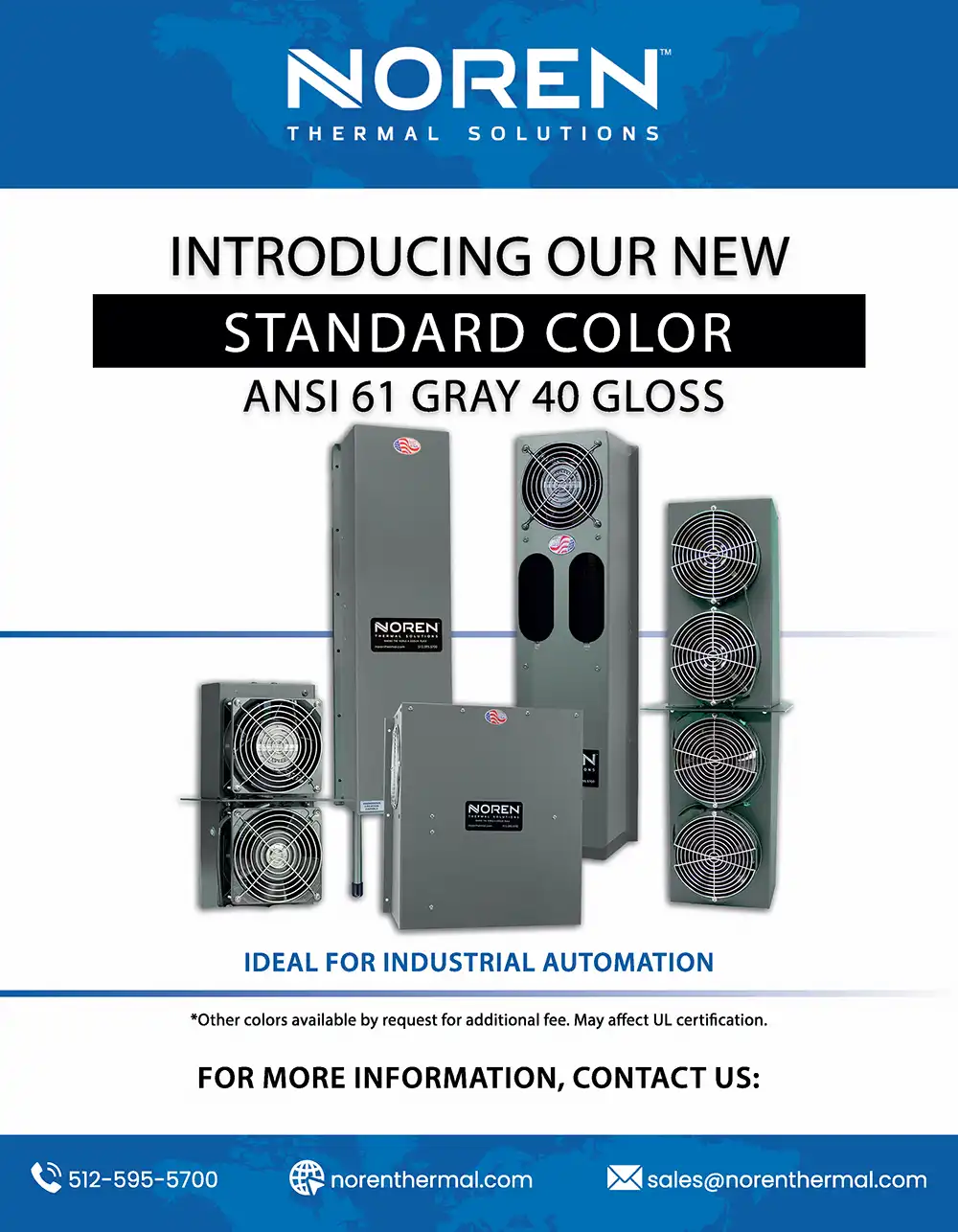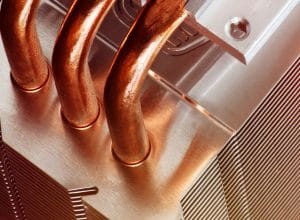 The field of manufacturing was one of the bigger areas where heat exchangers first made an impact. Traditionally, manufacturing companies had to keep their electrical control panels and other enclosures cooled using air conditioning or air compressing solutions. When heat exchangers provided a more efficient and cost-effective way of cooling electrical equipment, the burdens that come with air conditioners and air compressors were no longer an absolute necessity. Since then, heat exchangers have continued to help streamline the manufacturing industry by making technology more efficient. Those benefits have also extended far beyond manufacturing as nearly every other industry have followed suit. (more…)
The field of manufacturing was one of the bigger areas where heat exchangers first made an impact. Traditionally, manufacturing companies had to keep their electrical control panels and other enclosures cooled using air conditioning or air compressing solutions. When heat exchangers provided a more efficient and cost-effective way of cooling electrical equipment, the burdens that come with air conditioners and air compressors were no longer an absolute necessity. Since then, heat exchangers have continued to help streamline the manufacturing industry by making technology more efficient. Those benefits have also extended far beyond manufacturing as nearly every other industry have followed suit. (more…)
Understanding How Heat Exchangers Save Companies Energy
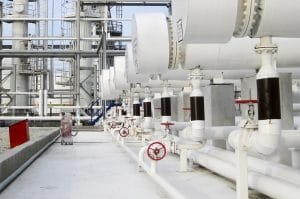 Not every energy saving initiative is a successful one. Some don’t actually save companies money, while others include significantly high costs in other areas. However, for companies that implement heat exchangers as their electrical thermal management system of choice, saving energy is not only effective but also beneficial for nearly every other related process. As heat exchangers have advanced and become more common in virtually all industries, their ability to save energy and more while streamlining the thermal management process has become increasingly more important. (more…)
Not every energy saving initiative is a successful one. Some don’t actually save companies money, while others include significantly high costs in other areas. However, for companies that implement heat exchangers as their electrical thermal management system of choice, saving energy is not only effective but also beneficial for nearly every other related process. As heat exchangers have advanced and become more common in virtually all industries, their ability to save energy and more while streamlining the thermal management process has become increasingly more important. (more…)
The Advancement of Electrical Cabinet Cooling
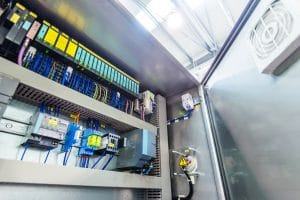 Cooling electrical cabinets and other, similar enclosures has always been paramount to the success and efficiency of technology. However, the methods that were once commonly used to achieve this weren’t always efficient, and maintaining their long-term success could often be cumbersome. Today, companies have many different options for cooling electrical cabinets of all sizes and in all applications. In many cases, modern heat exchangers offer the most efficient, most effective, and most eco-friendly solution for cooling high-performance electrical enclosures. Despite using less energy and less complex equipment than traditional solutions, heat exchangers can often provide more reliable electrical cooling results at minimal cost. (more…)
Cooling electrical cabinets and other, similar enclosures has always been paramount to the success and efficiency of technology. However, the methods that were once commonly used to achieve this weren’t always efficient, and maintaining their long-term success could often be cumbersome. Today, companies have many different options for cooling electrical cabinets of all sizes and in all applications. In many cases, modern heat exchangers offer the most efficient, most effective, and most eco-friendly solution for cooling high-performance electrical enclosures. Despite using less energy and less complex equipment than traditional solutions, heat exchangers can often provide more reliable electrical cooling results at minimal cost. (more…)
Things that Make Heat Exchangers Optimal for Automated Tech
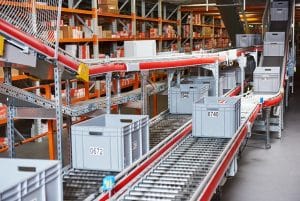 For as long as they’ve been a common factor in electrical thermal management, heat exchangers have proven optimal in helping companies improve their electrical cooling processes in many different ways. The complications that arise from reliance on solutions like air conditioners and air compressors, which often include excessive energy needs and frequent repairs, were no longer a concern when companies upgraded to less cumbersome heat exchangers. These same hindrances also made it difficult for technology to advance, though with more streamlined and efficient electrical cooling, heat exchangers have helped remove that road block, as well. For example, the same aspects that made heat exchangers popular to begin with have also proven essential to the advancement of things like automated tech, which is becoming more common in nearly every industry. (more…)
For as long as they’ve been a common factor in electrical thermal management, heat exchangers have proven optimal in helping companies improve their electrical cooling processes in many different ways. The complications that arise from reliance on solutions like air conditioners and air compressors, which often include excessive energy needs and frequent repairs, were no longer a concern when companies upgraded to less cumbersome heat exchangers. These same hindrances also made it difficult for technology to advance, though with more streamlined and efficient electrical cooling, heat exchangers have helped remove that road block, as well. For example, the same aspects that made heat exchangers popular to begin with have also proven essential to the advancement of things like automated tech, which is becoming more common in nearly every industry. (more…)
Are Heat Exchangers Effective for Below-Ambient Cooling?
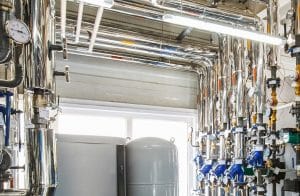 With their ability to make ambient cooling a viable solution for electrical thermal management, heat exchangers have long been recognized as some of the most efficient electrical cooling solutions. For most applications, ambient cooling is more than adequate to prevent electrical overheating, and the simplified processes by which heat exchangers transfer heat are significantly more cost and labor efficient than older solutions. However, ambient cooling isn’t always sufficient for every application; depending on its location, function, and specific operating parameters, many applications require below-ambient cooling to continue operating at optimal capacities. Fortunately, many of today’s heat exchangers are designed to achieve below-ambient cooling with just as much efficiency and at equally minimal costs as their ambient-cooling predecessors. (more…)
With their ability to make ambient cooling a viable solution for electrical thermal management, heat exchangers have long been recognized as some of the most efficient electrical cooling solutions. For most applications, ambient cooling is more than adequate to prevent electrical overheating, and the simplified processes by which heat exchangers transfer heat are significantly more cost and labor efficient than older solutions. However, ambient cooling isn’t always sufficient for every application; depending on its location, function, and specific operating parameters, many applications require below-ambient cooling to continue operating at optimal capacities. Fortunately, many of today’s heat exchangers are designed to achieve below-ambient cooling with just as much efficiency and at equally minimal costs as their ambient-cooling predecessors. (more…)
An Advanced Method of Ambient Electrical Cooling
 Electrical thermal management is a conundrum. If it could occur in a wide open environment, wear waste heat can simply flow away from sensitive components, then there would be little or no need for electrical thermal management solutions. However, an open environment would also leave those same components vulnerable to harmful contaminants, like dust and debris, or moisture that could lead to severe damage. With modern thermal management systems, such as heat exchangers, ambient cooling can be contained in a safe, easily manageable environment. This allows companies to effectively prevent electrical overheating at minimal cost and effort. (more…)
Electrical thermal management is a conundrum. If it could occur in a wide open environment, wear waste heat can simply flow away from sensitive components, then there would be little or no need for electrical thermal management solutions. However, an open environment would also leave those same components vulnerable to harmful contaminants, like dust and debris, or moisture that could lead to severe damage. With modern thermal management systems, such as heat exchangers, ambient cooling can be contained in a safe, easily manageable environment. This allows companies to effectively prevent electrical overheating at minimal cost and effort. (more…)
Thermal Pins – Heat Exchangers that Rapidly Cool Molds
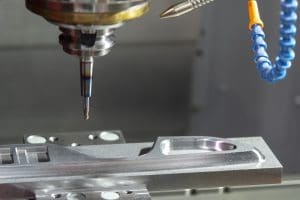 When companies first began using heat exchangers, their primary purpose was to transfer electrical waste heat and prevent electrical enclosures from overheating. Heat exchangers are able to do this more rapidly than traditional solutions can chill the heat, making them a more efficient and productive way to cool electrical equipment. However, as technology has evolved, so have their thermal management systems, and the same technologies that make heat exchangers possible have also become staples in several other thermal management processes. For example, for modern molding companies, thermal pins are able to translate the same heat transfer principles into machine tool cooling. (more…)
When companies first began using heat exchangers, their primary purpose was to transfer electrical waste heat and prevent electrical enclosures from overheating. Heat exchangers are able to do this more rapidly than traditional solutions can chill the heat, making them a more efficient and productive way to cool electrical equipment. However, as technology has evolved, so have their thermal management systems, and the same technologies that make heat exchangers possible have also become staples in several other thermal management processes. For example, for modern molding companies, thermal pins are able to translate the same heat transfer principles into machine tool cooling. (more…)
3 Important Green Energy Aspects of Heat Exchangers
 In many applications, greener energy means lowering a company’s reliance on energy, or finding alternatives to non-renewable energy sources to lower their environmental impacts. Together, the various initiatives that company’s implement are designed to reduce those impacts without negatively affecting its productivity and efficiency. While these initiatives can span a company’s entire range of operations, thermal management is often one of the more impactful areas. With the advancement of heat exchangers and other custom solutions, virtually all industries have made significant advancements in making their thermal management processes greener and more eco-friendly. (more…)
In many applications, greener energy means lowering a company’s reliance on energy, or finding alternatives to non-renewable energy sources to lower their environmental impacts. Together, the various initiatives that company’s implement are designed to reduce those impacts without negatively affecting its productivity and efficiency. While these initiatives can span a company’s entire range of operations, thermal management is often one of the more impactful areas. With the advancement of heat exchangers and other custom solutions, virtually all industries have made significant advancements in making their thermal management processes greener and more eco-friendly. (more…)
Important Impacts that Come with Better Thermal Management
 The most important advantages that come with improved, innovative technologies are the abilities to be more efficient and productive without requiring significantly more resources to do so. For example, in the realm of thermal management, the better systems are those that not only handle large amounts of electrical waste heat effectively, but that can do so while minimizing the costs to the companies that rely on them. In many instances, heat exchangers fit that description perfectly. Using advanced methods of transferring heat that don’t require traditional cooling and HVAC methods, heat exchangers have had a notable impact on the improvement of electrical thermal management. (more…)
The most important advantages that come with improved, innovative technologies are the abilities to be more efficient and productive without requiring significantly more resources to do so. For example, in the realm of thermal management, the better systems are those that not only handle large amounts of electrical waste heat effectively, but that can do so while minimizing the costs to the companies that rely on them. In many instances, heat exchangers fit that description perfectly. Using advanced methods of transferring heat that don’t require traditional cooling and HVAC methods, heat exchangers have had a notable impact on the improvement of electrical thermal management. (more…)
Is It Possible to Make Electrical Cooling Eco-Friendly?
 As companies in all industries strive to find ways to make their operations more eco-friendly, the realm of electrical thermal management has played an important role. Traditionally, it’s also been one of the most energy and attention-reliant aspects of those operations. The conventional air conditioning and air compressing solutions that companies relied on were far from eco-friendly, though they had few other options to affordably keep their electrical equipment cooled. Today, however, more advanced heat exchangers and other custom thermal solutions provide a more streamlined and eco-friendly way to achieve high-performance electrical cooling in a wide range of modern applications. (more…)
As companies in all industries strive to find ways to make their operations more eco-friendly, the realm of electrical thermal management has played an important role. Traditionally, it’s also been one of the most energy and attention-reliant aspects of those operations. The conventional air conditioning and air compressing solutions that companies relied on were far from eco-friendly, though they had few other options to affordably keep their electrical equipment cooled. Today, however, more advanced heat exchangers and other custom thermal solutions provide a more streamlined and eco-friendly way to achieve high-performance electrical cooling in a wide range of modern applications. (more…)
